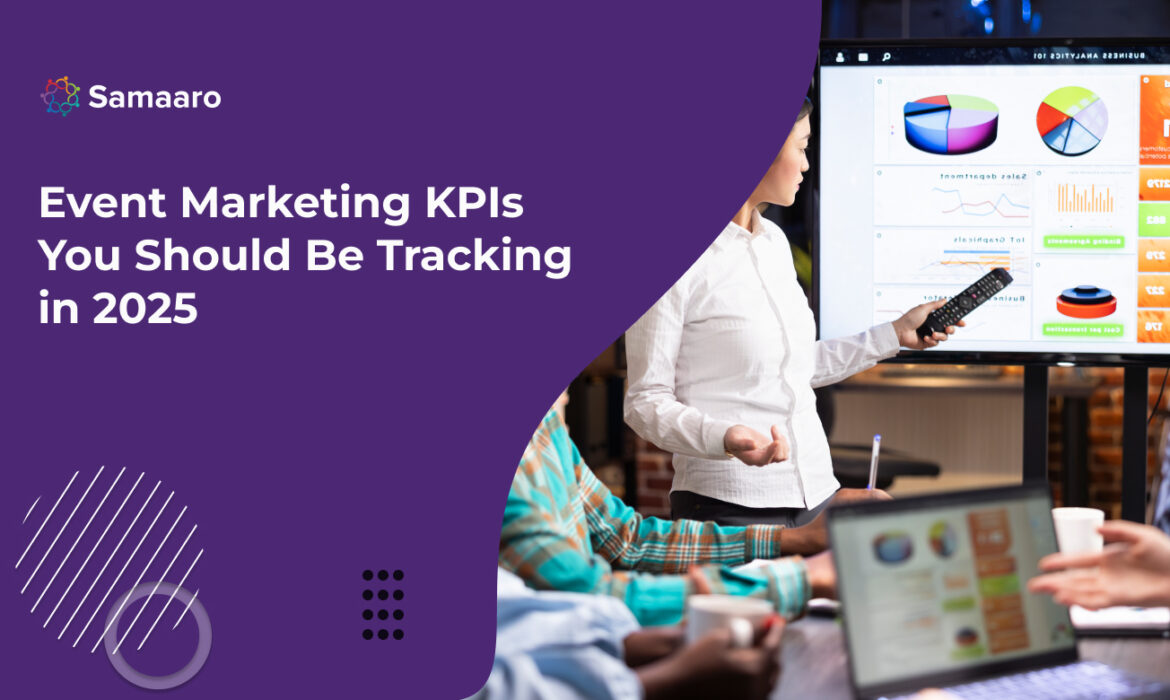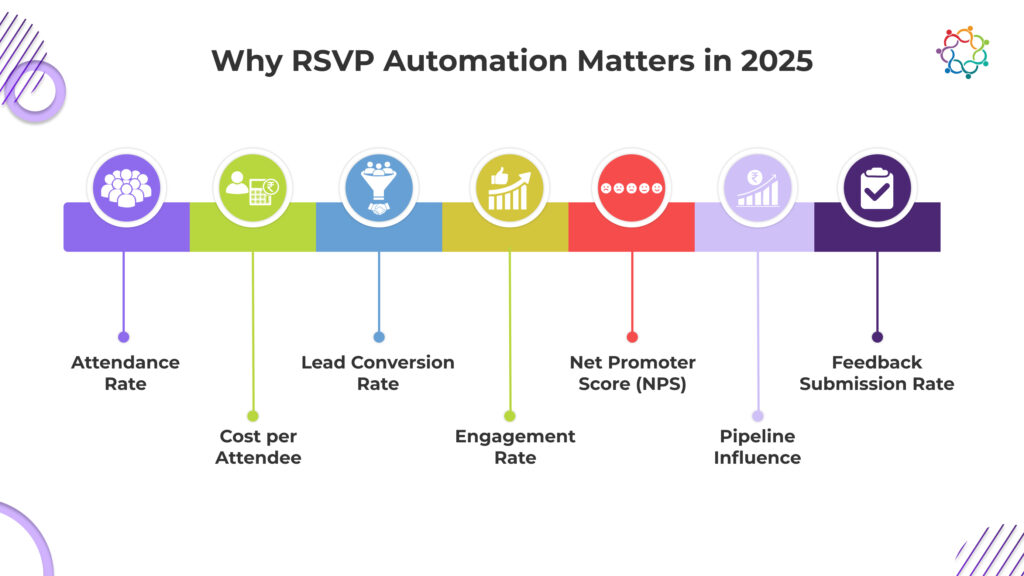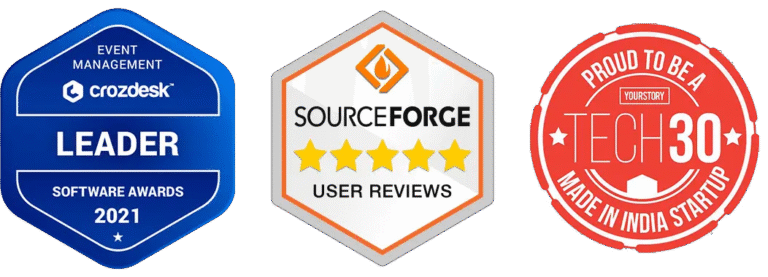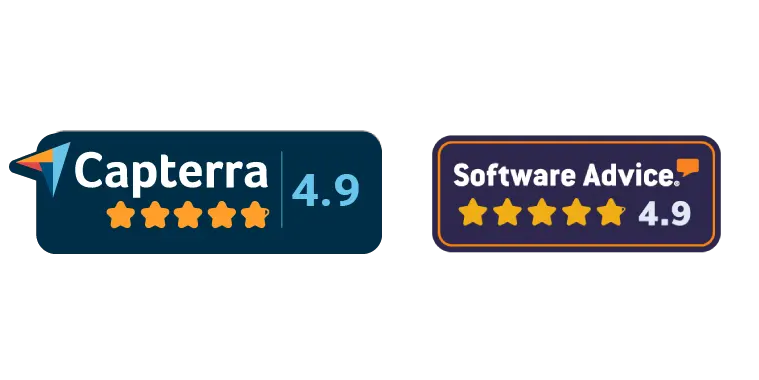Samaaro + Your CRM: Zero Integration Fee for Annual Sign-Ups Until 30 June, 2025
- 00Days
- 00Hrs
- 00Min

In the past, event success was basically based on foot traffic, registrations and social chatter. Fast forward to 2025, marketing leaders are no longer tasked with just building awareness, they need to show revenue impact, which means you will need to connect event marketing KPIs to commercial metrics.
Modern event strategies require more than a great creative and full house. Smarter data is needed, not just after the fact, but while the event is happening. The point is not to just tabulate who was there, but what they did, and more importantly, how they moved along the funnel. This is the point where you should stop talking vanity metrics and use event performance metrics that enable better strategic decisions, better targeting, and ultimately, better ROI.
With 2025 fast approaching, if you will be planning or measuring events consider these 7 KPIs that truly matter:

1. Attendance Rate (%): Formula: (Actual Attendees ÷ Registrants) × 100
This simple percentage is a direct measurement of how compelling or worthwhile your event was to your intended audience. A low attendance percentage can signal real problems – weak message, weak target, too many invites etc. In 2025, since every registration will represent a real marketing spend investment, this will give a sense for effectiveness in message-to-action commitment.
2. Cost Per Attendee: Formula: Total Event Cost ÷ Attendees
This KPI speaks directly to fiscal responsibility or budget efficiency in context – was the cost per invitee efficient in line with other events/format types. Whether you have do an investor dinner, or a 5-city road show, knowing your cost per attendee, and budgeting relative to the past can keep you in control of your spending and measure benchmarking across formats.
3.Lead Conversion Rate
Formula: (Leads from event ÷ Total attendees) x 100
Among the top event ROI measures, this measures how effectively participants engaged beyond passive attendance and translated to pipeline. If you create a CRM sync, this is where the real attribution begins.
4. Engagement Rate
Instead of a passive headcount, ask: how involved were they? Track metrics below, including but not limited to:
High engagement metrics indicate your event content resonated with the audience. If the numbers are low, this is your signal to revisit your agenda design or channel execution.
5. Net Promoter Score (NPS)
Event post-surveys that ask the question, “How likely are you to recommend this event?” give you a clear, quantifiable measurement of brand development and attendee sentiment. NPS is a great way to get an immediate and powerful sense of long-term brand value and impact.
6. Pipeline Influence or Revenue Attribution
This is the holy grail for CMOs. Use your CRM (Customer Relationship Management) tool and event platform integration for any of the three tracking aspects below, including but not limited to:
Tools like Samaaro make it easy to sync these touchpoints into your Salesforce or HubSpot dashboards.
7. Feedback Submission Rate
This one might be overlooked, but how many attendees filled out your feedback forms? No matter how you ask for feedback, this is a measurement of attendee investment to the event.It also indicates how effectively you prompted to encourage post-action events, which is a fundamental component of any event cycle.

Today’s event marketing success relies on utility and seamless tracking from tool to tool. Here’s how the best-performing teams create the configuration required:
CRM Platforms – (Salesforce, HubSpot)
Tracking lead status, revenue influence, and continued nurture post-event is CRUCIAL for event ROI measurement and lead scoring from your event.
Event Tech Platforms – (Samaaro, Cvent)
Provide live dashboards displaying attendance, engagement, check-in status, and session drop-off rates. Some platforms, like Samaaro, take it a step further by integrating directly with marketing automation and feedback tools.
Analytics Suites – (Google Analytics, Mixpanel)
Used for tracking traffic source, conversions from the promotional page, and post-event web actions like demo requests or resource downloads.
Survey Tools – (Typeform, Samaaro Feedback Manager)
Used for tracking NPS, speaker feedback, content rating, etc. The Samaaro Feedback Manager was built for enterprise-level data capturing and dashboard integration.
Unlike most platforms that focus only on pre-event workflows, Samaaro gives equal importance to performance analytics and post-event insights helping you measure success every step of the way. Here’s how Samaaro drives real-time event KPI tracking for your campaigns:
This level of visibility enables event marketers to make data-driven decisions in real time, refine strategies while events are still live, and generate actionable post-event insights that validate every decision with measurable impact.

Tracking event KPIs is not just about reporting, but also about every event becoming progressively smarter. In 2025, marketing teams can’t rely just on gut instinct or guesswork for your post-event insights. Every single touchpoint is there for a reason, every indicator has a story, and every insight can help shape our next big win.
As a reminder, marketers using an event platform like Samaaro for tracking KPIs can much more than a singular event metrics measures, and imaging true clarity from overall impact from KPI, from invite to impact (i.e. deployment of invitation for either demand generation roadshows or investor networking dinners). Real-time dashboard, CRM syncing, audience insights, visuals, etc. are now baseline expectation, not an enhancement or add on.
So why guess when you can just start tracking event performance to get the real measures of success?

Built for modern marketing teams, Samaaro’s AI-powered event-tech platform helps you run events more efficiently, reduce manual work, engage attendees, capture qualified leads and gain real-time visibility into your events’ performance.


© 2025 — Samaaro. All Rights Reserved.